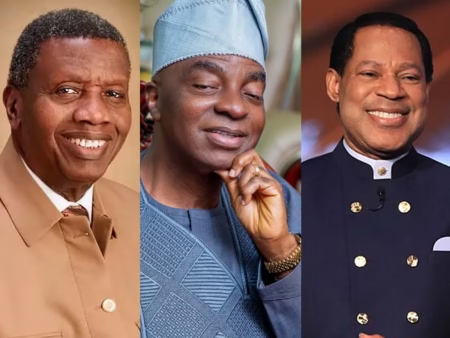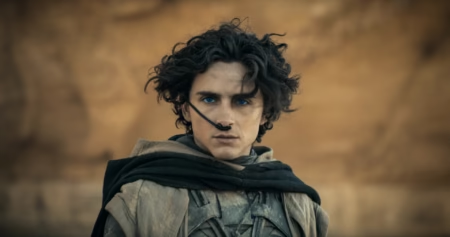The highly anticipated 2023 Flash movie has come and gone, leaving a lasting impression on many viewers. Like James Tucker’s Flashpoint Paradox, we once again witness the core phenomenon of time travel and its rippling consequences in the expanding reality of Warner Bros’ Digital Comic.
The movie starts on a positive note, endearing us with the familiar jokester of the DCEU universe, who’s closely acquainted with the web-slinging and friendly neighborhood Spider-Man of a parallel dimension. However, the story soon turns dark, unveiling the complexities defining Barry Allen’s character.
It ruthlessly reveals the harsh truth that, despite having all the time in the world and the ability to break the sound barrier, one cannot escape certain events. No matter how hard one tries to outrun them, some things remain as unyielding barriers on the highway of change. It’s like trying to catch a lightning bolt with bare hands—painfully futile!
The movie offers a scintillating allure, initially presenting a promising narrative. It skillfully intertwines the fundamental elements of science fiction, seamlessly blending in comedic gems and slices of life before plunging into the depths of its lackluster portrayal.
It’s common knowledge that the DCEU dabbles in the art of diversifying its narratives, reflecting multiple tendencies to turn a “constant point in time” into a constellation of events—a variable in random encounters—ultimately leading to a larger plot, but this time across timelines. This involved orchestrating a grand narrative that challenges the very fabric of our existence, piercing straight into the multiverse of wit and wonder, demonstrating that mere linear constraints ever bind no story.
This narrative curve unfolds when Barry Allen, having realized that he is the janitor of the Justice League, races back in time after encountering the possibility that he could create a reality where his mother is alive.
Of course, he performs a test run, hurtling through the corridor of time past a series of events saved by light and energy. He absorbs the interplay of order and chaos, a natural blend that could shape a universe, molding it to spit out conceivable possibilities. All of these occur while Barry Allen is rooted to the spot, bound by the shackles of the “speed force.” Before he can fully digest the unique elements of each point in his life, Barry is ejected from this pocket dimension by his past self. This version, equally audacious and bearing a ghastly appearance, appears on the scene, feverishly attempting to rewrite their shared reality. A tangled dance of destinies ensues, a tug-of-war for the ultimate rewrite, as two versions of Barry Allen clash, causing ripples that shake the foundations of their intertwined lives.
His decision to shatter the fabric of the space-time continuum occurs when his father’s death sentence draws near. Not all children can bear the weight of 19-year-old trauma coupled with the tormenting reality of helplessness, but Barry clings to his past, where all his happy moments reside. This might explain his childish and excessive behavior, suggesting he never mentally adjusted in tune with his maturing essence.
Barry’s thrilling run through time was marred by poor graphical representation. While the concept resonated with everyone on paper, its execution in real-time appeared as a poorly intentioned comical depiction, almost as if quality control had been disregarded. At this point, the idea surfaced that DC’s Flash had no control over its intended jokes, with comical amusement stemming from poorly executed scenes and witticisms flying over everyone’s head.
Upon successfully turning back time, the movie shifts focus to the bromance between Barry and his past self. He first encounters a splitting wail like that of a silver banshee, only to realize it was merely his past self echoing his shrill voice. This moment led to a pivotal transition for Barry, forcing him to acknowledge his annoying tendencies; all it took was a simple look in the mirror.
Barry successfully saves his mother from her untimely demise and mentors his past self, aligning him with the typical superhero arc. It was only after this that the movie began to resemble familiar narratives without making viewers cringe.
The DCEU established their gimmick towards the end of the movie, showcasing a makeshift Justice League consisting of Barry Allen and his past self, Super Girl, and an aged Batman, played by Michael Keaton, who seemed older than the city he watches over. They engage in a city-leveling brawl reminiscent of the canonical Superman vs Zod fight. However, it wasn’t the anticipated grudge match between Clark and Zod, but a thirst for vengeance featuring a bloodthirsty Kara Zor-El, played by Sasha Calle, taking the place of Clark, who never made it to Earth.
This scene explores what might happen if Superman died before arriving on Earth, with Kara Zor-El fighting Zod’s war machines and sworn allies. This echoes Marvel’s “What If” storyline (the last-minute brawl against Ultron and his infinity stones) but with an overkill level of execution. Unlike its animated counterparts (Justice League series, Man of Tomorrow, etc.) and its cinematic rival, Marvel, DC’s attempts to lead in world expansion and exploit alternate realities through live-action drama falls flat, and not just because of Ezra Miller’s cringe-inducing running scenes.
Unfortunately, The Flash leaves many factors unchecked, disappointing viewers in general. With each new movie production, audiences grapple with the ever-changing narratives of the DCEU, adapting to inconsistent storylines. The subpar CGI compounds this inconsistency in The Flash, which fails to match the standards set by leading productions of this generation.
While we must credit Ezra Miller for portraying the dual characteristics of spirited forensic scientist Barry Allen and his hyperactive younger self, one cannot ignore the brutal assault on the Flashpoint Paradox storyline. This was predictable, almost as if DC had gone into overdrive following the same playbook as Sam Liu’s Death of Superman and Zack Snyder’s 2016 Dawn of Justice.
Ultimately, the film showcases a clash between the Flash and himself, illustrating that only when you conquer your inner demons will you see actual progress. In this case, the DCEU invested a blockbuster budget in a spectacular brawl that wasn’t worth the build-up.
It seems they’ve mastered the art of crafting breathtaking trailers that outshine the actual films, making us wonder if DC’s true superpower lies in the editing room. It’s foolish to expect anything besides recycled material served alongside diminished quality. Let’s hope there’s a reality where the DCEU performs better.



